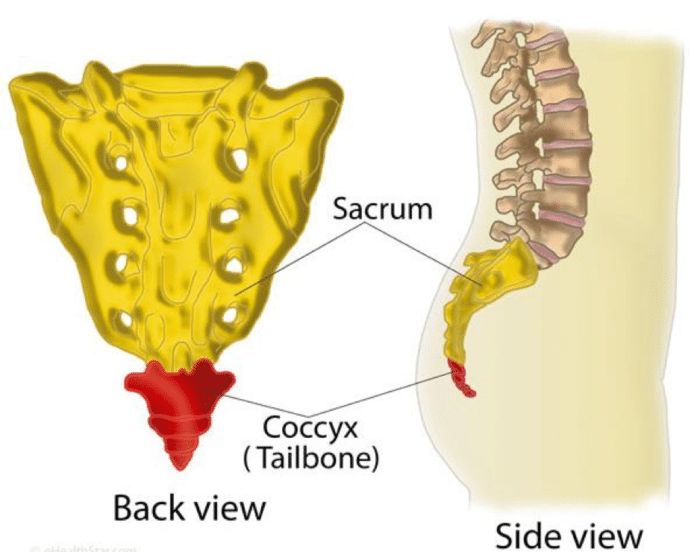What is Coccydynia?
By Emily Quinn PT
Coccydynia is defined as pain in the coccyx, commonly known as the tailbone. Typically, people with coccydynia experience pain with sitting, prolonged standing and when transitioning between a seated to standing position. Some individuals may also experience pain with intercourse and/or when having a bowel movement.
What is the coccyx anyways?
The coccyx is a small, triangular shaped bone that is located at the end of the spine. This small bone serves as a key attachment site for many ligaments and muscles of the pelvic floor as well as for part of the Gluteus Maximus muscle. The coccyx, in addition to our ischial tuberosities (commonly known as our sit bones) provides our bodies with support when we are in a seated position.
What are the risk factors?
Some of the risk factors for developing coccydynia include:
Obesity
Females are 5 times more likely to develop than males
Morphology of the coccyx
Degenerative joint changes and/or disc disease in the spine
Excess and/or restricted movement in the spine
Repetitive sitting postures
*Trauma
*Of those listed above, trauma is the most common risk factor. A common cause of external trauma to the coccyx includes falling backwards. One of the most common causes of internal trauma to the coccyx includes assisted vaginal deliveries.
How can Pelvic floor physiotherapists help with coccydynia?
Coccydynia is best treated with a multimodal, individualized treatment approach. 90% of individuals experiencing coccydynia improve with conservative management, including pelvic floor physiotherapy. Pelvic floor physiotherapists use a combination of manual therapy and exercise prescription to improve the mobility and overall function of the coccyx and nearby structures that may be involved. In addition, physiotherapists may educate individuals on pressure-relieving sitting devices, postural considerations and changes to one’s ergonomic setup. Additional medical interventions may be considered for some individuals who see little or no improvement with conservative management.
References:
Image received from ehealthstar.com on September 27th, 2020
Lirette, L. S., Chaiban, G., Tolba, R., & Eissa, H. (2014). Coccydynia: An overview of the anatomy, etiology, and treatment of coccyx pain. Ochsner Journal, 14(1), 84– 87.


